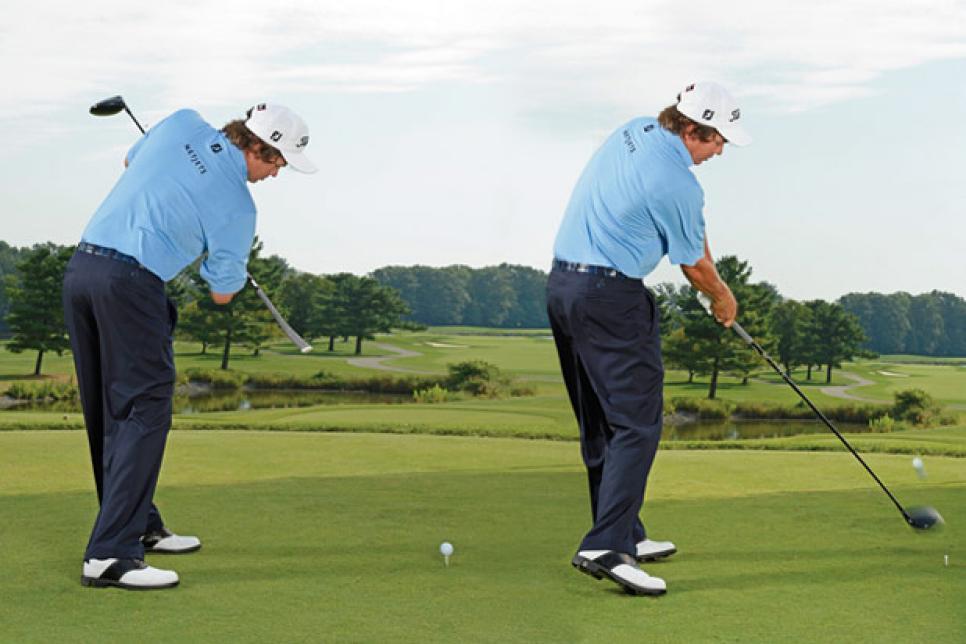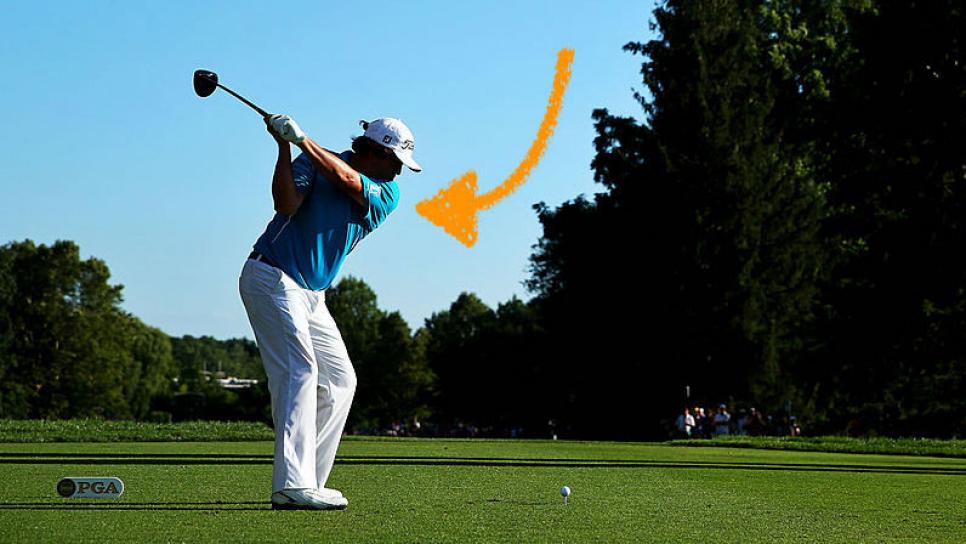The 2013 PGA Championship, the last time the iconic Oak Hill Country Club, is one of those majors that sticks it for me.
That year was my first as a golf writer (it started right here at Golf Digest!). It was the tail end of the no-cheering-in-the-press-box era of sports journalism, and Dufner was my favorite player of the time. I thought the whole Dufnering thing was hilarious. It was relatable that Dufner never looked entirely comfortable over short putts and didn't bomb drives into the stratosphere like other players. Yet he was still one of the best players in golf. I loved that his golf swing was absolutely nails and that he was a PGA Tour journeyman who got his major.
At Oak Hill that week, Dufner was at his sharp-shooting best. He hit 75 percent of his greens in regulation firing at seemingly every pin. He left a 12-footer just a few revolutions short for a then-major-championship-record-breaking 62 during his second round, and was rock solid in the final group on Sunday. His only bogeys came on 17 and 18, when the tournament had already been won. (Unfortunately, on Friday Dufner withdrew from this year's PGA Championship.)
It was only in subsequent years that I came to appreciate Dufner as a secret golf nerd. He's painstaking with the way he dials-in his equipment—and really clever in his approach to his wedge game. Earlier this year, during a casual chat, he told me to record an unusual bunker shot technique where he closed the clubface yet still lifted the ball high and soft out of the sand. He challenged me to decode it.
After studying the film, I guessed it was a spin loft thing—a metric rooted in physics where Dufner was effectively adding loft to the club by swinging more down. I was mostly correct, he said, but I had missed a key ingredient. Yes he was swinging down, but it was paired with a recoil post-impact which allowed him to add even more loft.
If you've been lost in the nerdiness, that's sort of the point. Generally speaking, there are tour players who know nothing about things like spin loft and therefore have no desire to talk about it, and players who know all about things like spin loft and want you to know they know. Dufner was at the rare intersection between the two. He knows, and isn't interested in boasting about it.
I once asked him if, with all his knowledge, he'd ever be tempted by coaching once he puts his sticks away.
“Dealing with tour players is a nightmare,” he said. “They’re psychopaths, man. That’s just a fact.”
But look closely enough and he'll drop some useful breadcrumbs you can use for your own game, which brings me to a useful tidbit I remember Dufner revealing following his win. It always stuck with me. Maybe it will with you, too.
Right shoulder away, then toward
Dufner said his short-and-quick swing tended to get shorter-and-quicker—especially under pressure. "When that happens, I don't have enough time to square the clubface to my target by impact, so I hit it right," he said.
It's something a lot of us can relate to. For Dufner, the pressure on his golf swing was at its peak when the 2013 PGA was on the line, yet it held up thanks to his go-to swing thought.
First, to turn his right shoulder as far away from the ball as possible on the backswing.

And then, to move his right shoulder "directly to the ball" on the downswing.

There was a good reason for all of this. As he analyzed his swing on various launch monitors of the time, he and his coach Chuck Cook found pairing those two feelings neutralized his swing path, squared his clubface by relying less on "a lot of hand action" and upped his ball speed by giving him a full turn. Some big benefits, all courtesy of a simple swing thought:
Right shoulder away from the ball, then right shoulder toward the ball.
It takes someone who really knows the golf swing to make it as simple as that. And the proof was engraved onto the Wanamaker Trophy, 10 years ago.





